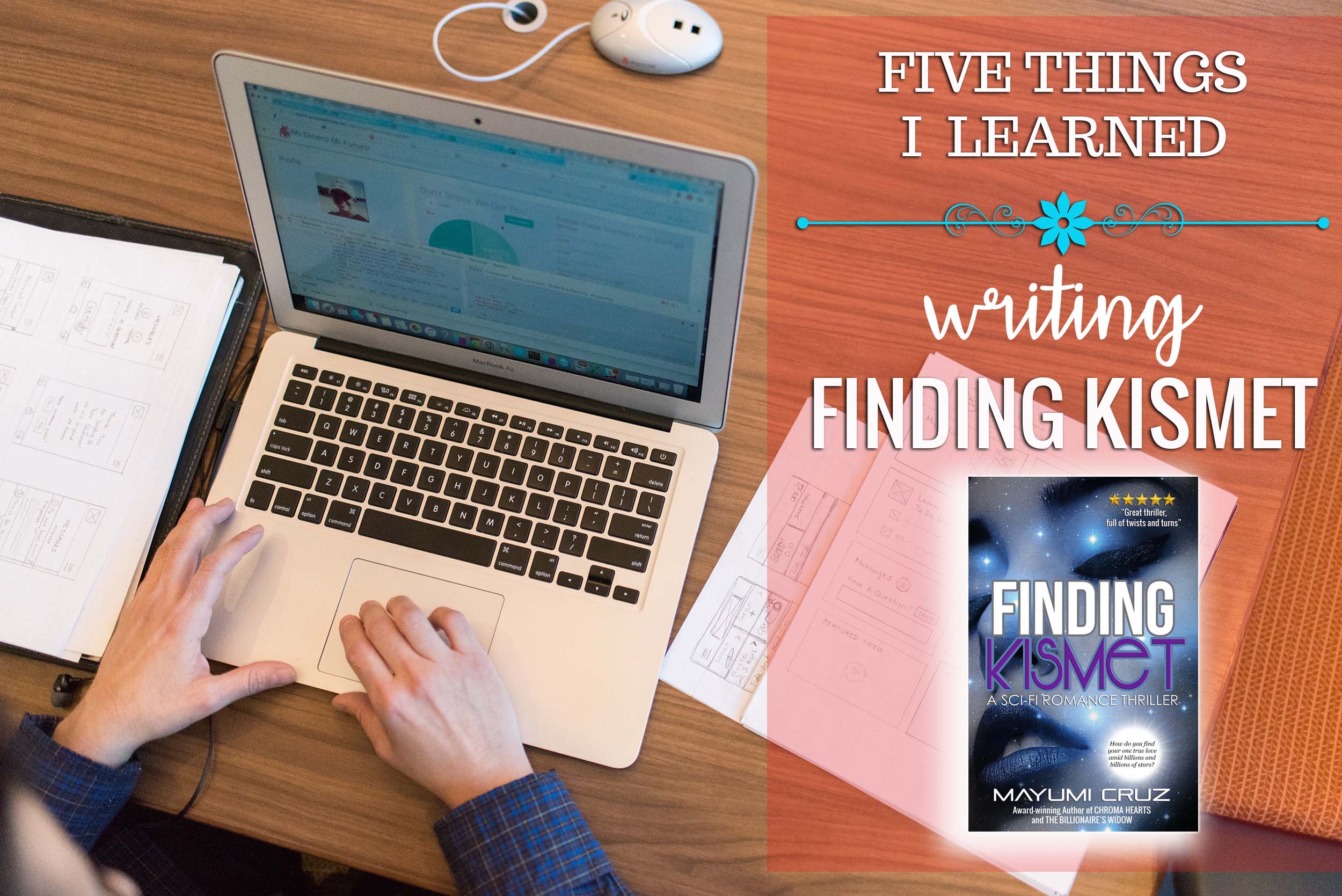Writing science fiction is no rocket science. It required effort and a whole lot of research.
In this post, I share the five things I learned when writing FINDING KISMET.
FINDING KISMET is a Sci Fi Romance Thriller. It means that while the romance between my hero and heroine is central to the story, there is also danger, tension and intrigue taking place in a breathtaking new planet with new species and their utopian civilization.
I’ve always maintained that I like challenging myself to write in a genre new to me, aside from writing in multiple and across genres.
So far, writing science fiction proved to be the hardest writing I’ve done. But it was also the most educational, not to mention, fulfilling.
That’s because writing science fiction required additional effort and a whole lot of research. It also taught me many things I haven’t learned in school.
I’d like to share them with you here. I bet you’d be surprised, too!
Five Things I Learned Writing FINDING KISMET
- Cryptochromes. These are proteins found in human retinas (that’s right, our eyes) which act as magnetic sensors. Birds and sea turtles have these too, which they use for navigation and finding food. Imagine that! From there, I was able to work it in the love story of Mavis and Tristan.
- Cyborgs vs Androids vs Robots. Yes, these three are different from one another. They’re not the same. Robots are man-made machines designed to do a specific task, cyborgs are humans with machine components, while androids are robots which look and act like humans. These distinctions helped a lot in making me create the characters AndroidX and AndroidV in Finding Kismet.
- Planet-building. I found so many sources of ideas and information about planets and galaxies in the internet and mixed them all in what I imagined Vaelteuria, my heroine’s planet, to be like. Tips in planet-building also abound, the most helpful for me were from The National Centre for Writing and Joanna Penn.
- Cells, Genetics and Cloning. In Finding Kismet, Vaelteuria’s advanced scientific technology created the perfect life system through a rare and supreme genetic code, the InceptOne. My research brought me to many scientific websites. I learned about somatic cells and reproductive cells or gametes and their distinctions. Do you know that gametes originated from germ cells, while somatic cells originated from stem cells? Cool, right? (Or not?)
- The Science of Love. That heady feeling you get when you see or touch someone you love? They are caused by our hormones and brain chemicals, specifically, estrogen, testosterone, dopamine, oxytocin, and more. Yes, there is indeed a science behind love. I have a separate post about this HERE.
So, there you are. I did not become a scientist studying all these, but my knowledge was made richer and they gave me a wider insight into many things.
I think incorporating romance into the science also made writing FINDING KISMET easier. My book is not all about science or technology. The characters–from the hero and heroine to the secondary characters–all have emotional depth and relatable issues, from which the story, with its twists and turns, was built.
Earlier this morning, I was amused to read a tweet which said that the tweeter never realized how much research went into writing a novel. This post aims to accentuate that truth.
Writing FINDING KISMET was indeed a work of love. And science, too.
FINDING KISMET is available on Amazon and Free for Kindle Unlimited subscribers.
Want to read it? Just click the button below.



I love sci-fi. Some of my favorite authors in this genre are Kurt Vonnegut, Ray Bradbury, and Philip Dick, Their stories are incredible. Looking forward to reading yours soon.
Thank you for “teaching” what you learned. Will definitely share to my son the differences between robots, cyborgs and androids 🙂